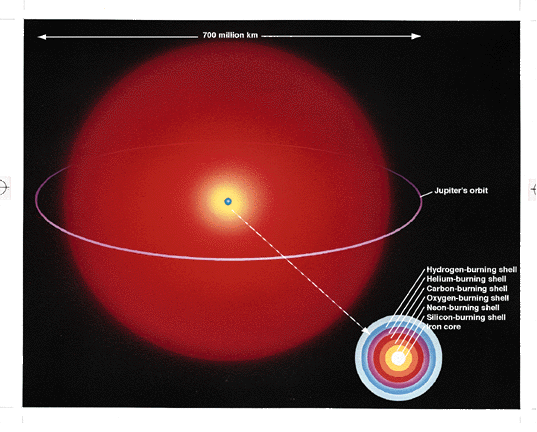

 |
 |
After a helium-burning red giant runs out of helium fuel in its core, the star's core starts to collapse and heat up. This causes the outer layers of the star to expand and cool, similar to the process that occurred after the star ran out of hydrogen fuel and left the main sequence. As the star swells larger and larger, it eventually becomes a red supergiant.
Extremely massive supergiants can generate high enough pressure and temperature to fuse elements even heavier than carbon and oxygen. Near the end of the red supergiant phase, a high mass star will develop several "onion layers" of heavier and heavier elements.
Eventually stars this massive die explosive deaths and become type II supernovae.
The lower figure on the right was obtained from the Universe:Origins and Evolution
Homepage.
Back to the Stellar Life Cycle Flow Chart